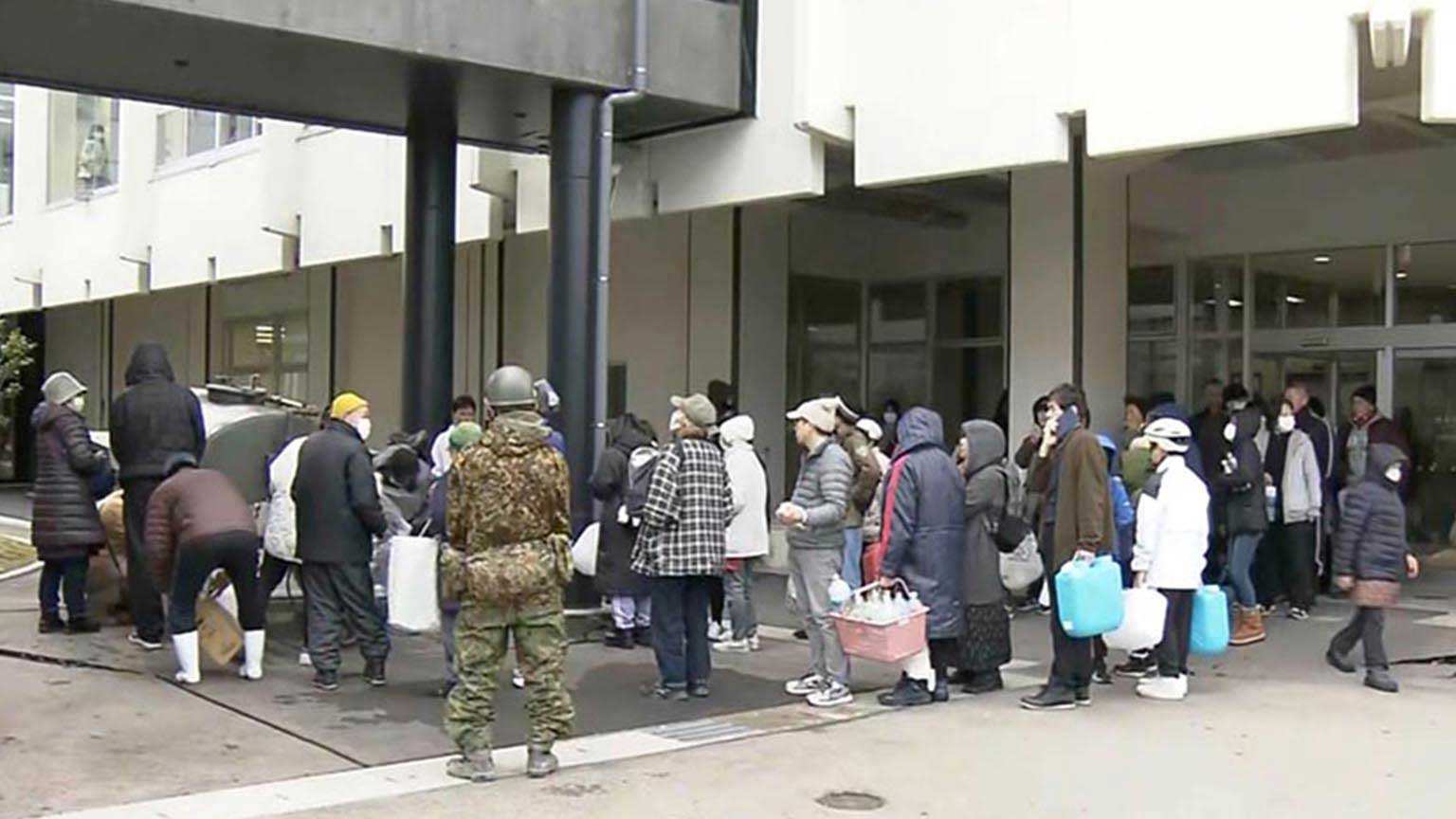Evacuees in Ishikawa Prefecture
About 33,000 people were in 335 evacuation centers as of 3 p.m. Wednesday.
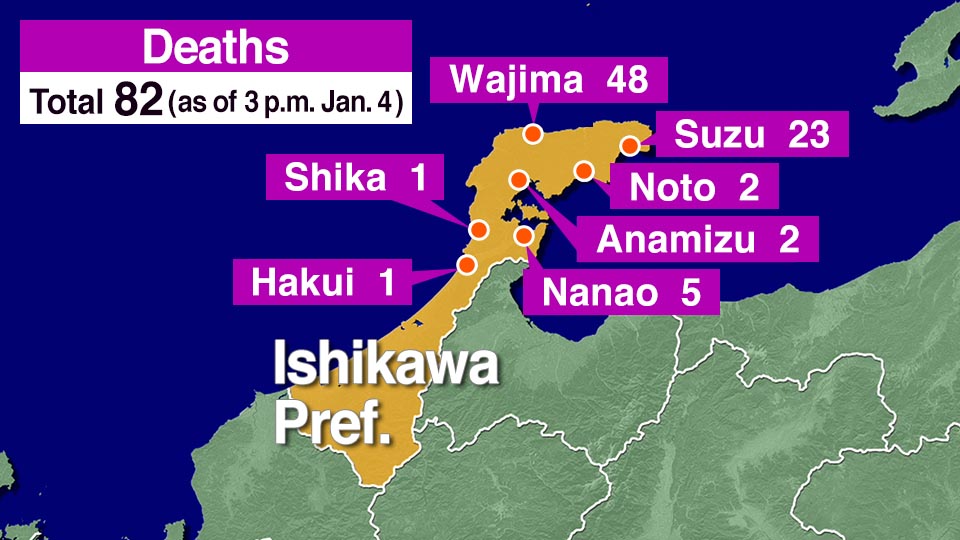
Food running out at evacuation centers
Noto Town
The Noto Junior high school center ran out of food on the night of January 2. Power and water outages continue.
On January 3, the government distributed bread and porridge provided by private businesses. The town says many people had returned to their hometown for the year-end and New Year holiday, so the number of evacuees exceeded expectations and food stockpiles were insufficient.
A man in his 20s said he was returning to his parents' home. "I'm worried about what will happen if the weather worsens and no supplies are delivered," he added.
Centers getting help from residents
Suzu City
Evacuation centers in the city are getting help from residents. Evacuees are bringing water, vegetables, and other items from their damaged homes to cope with water and food shortages.
About 800 people have taken refuge in Takaratsu Elementary and Junior High School in Takaratsu Town, where severe earthquake damage included collapsed houses.
People are sharing sweets and eating cup noodles distributed by nearby stores. They are also getting drinking water from shops in the area.
In the midst of their own crisis, some residents made enough pork soup to serve 800 people.
Blankets, but no food
Wajima City
At an evacuation center set up at Wajima Junior High School, Self-Defense Forces arrived on January 2 with blankets, but people are left with nothing to eat. Some are returning to their homes during the day to get food.
A city official says about 1,000 residents had taken refuge in the center as of Wednesday morning.
A man in his 70s who evacuated with his grandson said, "I have nothing to eat. We are eating sweet bread and biscuits from home to quench our hunger."
A man in his 40s was in the city to spend time with his parents. He said he went back to his parents' home to get futon mattresses to sleep on as he has back problems and lying directly on the floor chills his body.
Relief goods can't be delivered
Suzu City
A Suzu City official says more than 14,000 loaves of bread, 3,600 bottles of drinking water, and more than 14,000 portable toilets were delivered from the Ishikawa Prefectural government on January 3. An additional 30 portable toilets are set to arrive.
However, there are many areas in the city cut off due to road blockages, making it difficult to deliver supplies. Isolated evacuation centers do not have enough.
NHK World crew heading to Shika Town
An NHK World crew has been in Ishikawa Prefecture from day one. On Thursday, they were en route to Shika Town, where the maximum seismic intensity of 7 was recorded.
The crew says, "Since badly-affected areas are on the Noto Peninsula, which does not have enough usable roads, they are much more difficult to reach."
On Wednesday, it took more than 5 hours to get to Wajima City from their base, normally a two-hour trip.
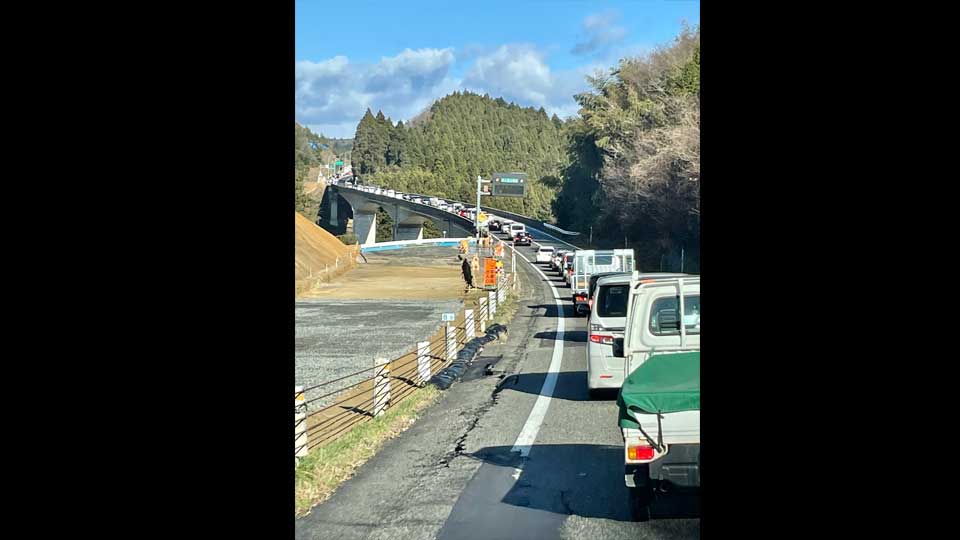
Not enough blankets
Nanao City
Yatago Community Center has heating, and toilets can be used for about three more days. Nine rooms are being used for evacuees, including one for infants. About 500 people stay during the day, rising to 800 at night.
But while there is enough food and drinking water, there is a shortage of blankets. The center is asking residents to bring them from home.
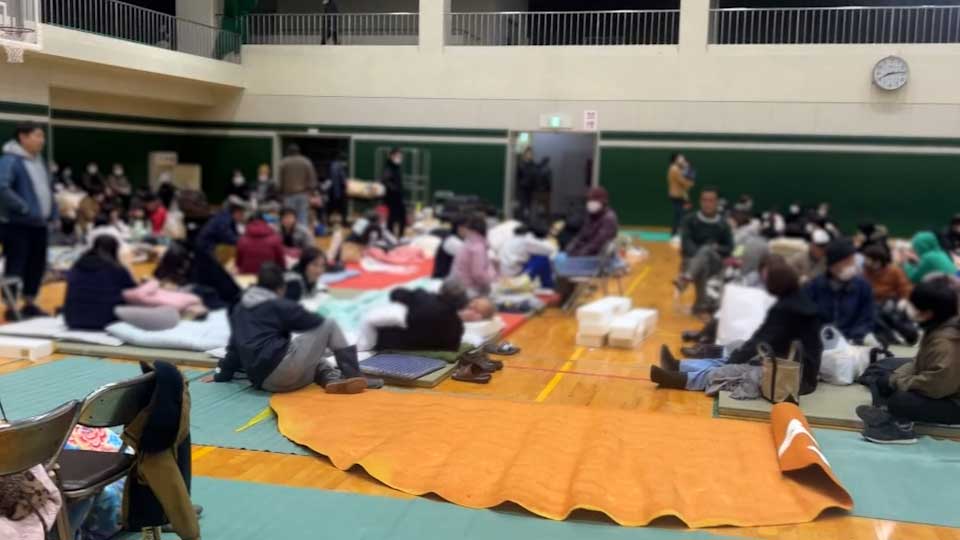
Noto Airport in Wajima City offers shelter
Passengers who were at the airport when the quake hit, and residents who live nearby, continue to stay at the terminal building. The airport is leaving the arrivals lobby open at night.
A man in his 20s with three children said he spent the first night in his car and evacuated to the terminal with his children and brother from the second day. He said "There have been earthquakes in Ishikawa Prefecture before, but this one was major. I'm glad the airport is open to the public." But he added that he wants to return home as soon as possible.
Many cars are still parked at the parking lot and some people are staying inside them. A man in his 50s who lives in Anamizu Town said, "There are too many people in the airport." He said he wanted to see how things are at home.
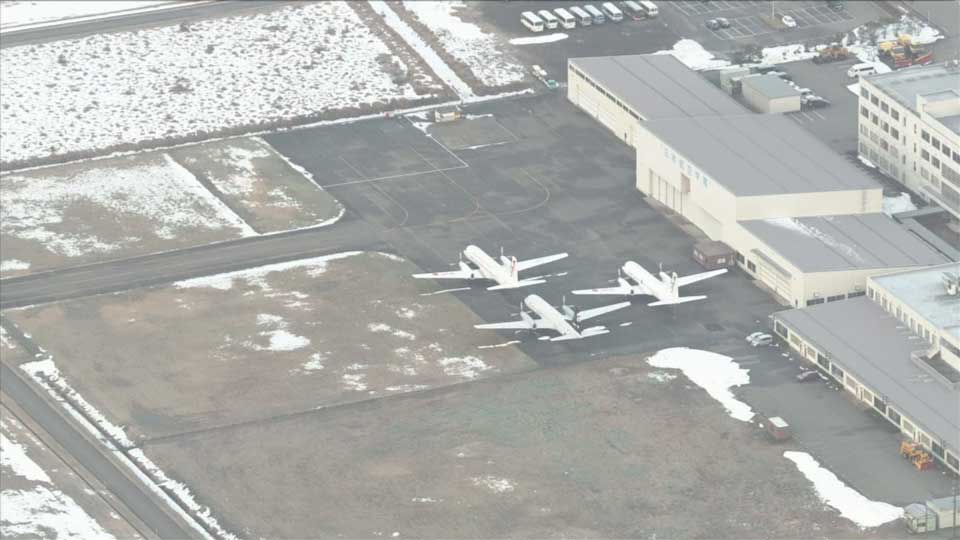
Health officials: Beware of food poisoning
Japan's health ministry has told local governments affected by the earthquake to make efforts to prevent food poisoning. They warn that even in the cold season, norovirus and other diseases could cause food-related health problems. They advise people to eat distributed food as soon as possible and to take care with hygiene, including thoroughly washing their hands before eating and after using the toilet.
The NHK World crew reached Shika Town and spotted a water station
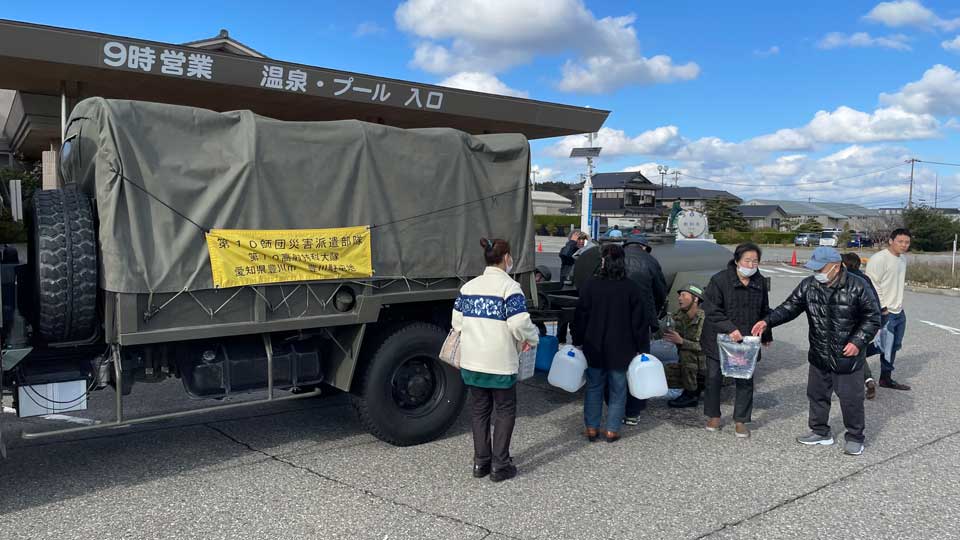
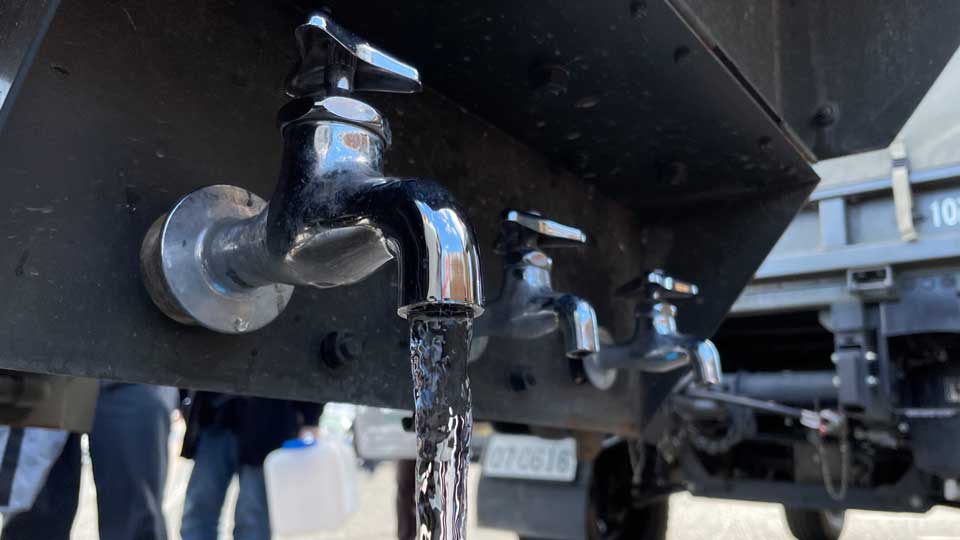
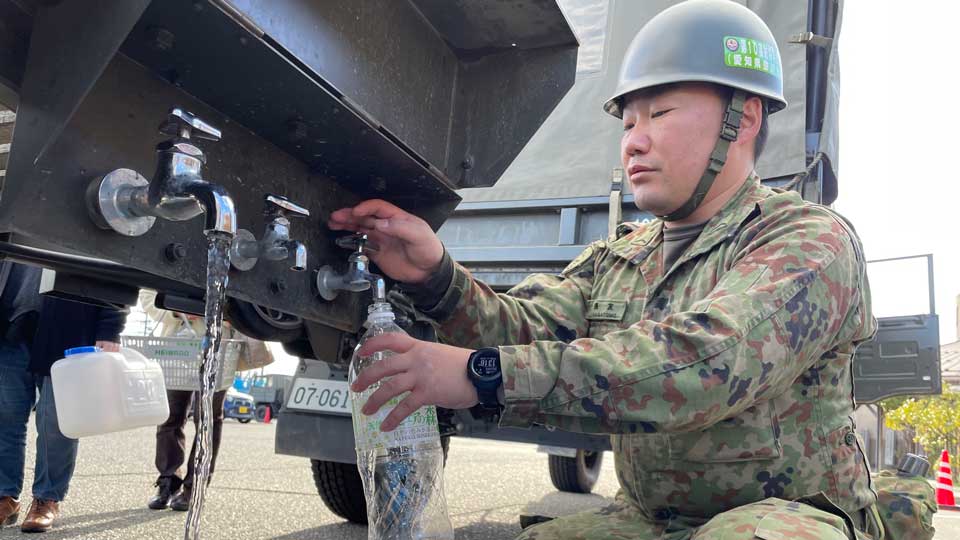
Three days have passed since the earthquake, but there is still no prospect of restoring the water supply. Residents are steadily visiting a Self-Defense Force truck for water.
At least 750 people in 29 districts cut off (as of 8 a.m. Thursday)
Due to the earthquake, some roads have become impassable, leaving some areas cut off and without any help.
According to Ishikawa Prefecture, at least 750 people were cut off in 29 districts as of Thursday morning.
Suzu City:
About 300 people in Otani Town
About 110 people in Orito Town
About 100 people in Matsunagi Town
About 90 people in Takaya Town
About 50 people in Kawaura Town
About 40 people in Oritokinoura
8 people in Maura Town
Yokokawa in Noroshi Town is also cut off, but further details are currently unavailable.
Areas in the northern part of the city are cut off due to road collapses and landslides, making it impossible to transport supplies from city hall and other facilities in the south.
People in these areas can't contact the city as they are without access to mobile phones or landlines. The city has yet to grasp details of the situation, including the residents' safety.
A city official says staff have tried to enter these areas for three days, but damage was so severe they had to give up.
The city official says "The current situation is that we are doing our best to respond to residents who have evacuated to the center of the city, and it is extremely difficult to support cut off areas due to a lack of staff."
So far, there has been no transportation of goods by helicopter or ship.
Nanao City:
About 10 people from 5 households in the Kawachi district of Nakajima Town
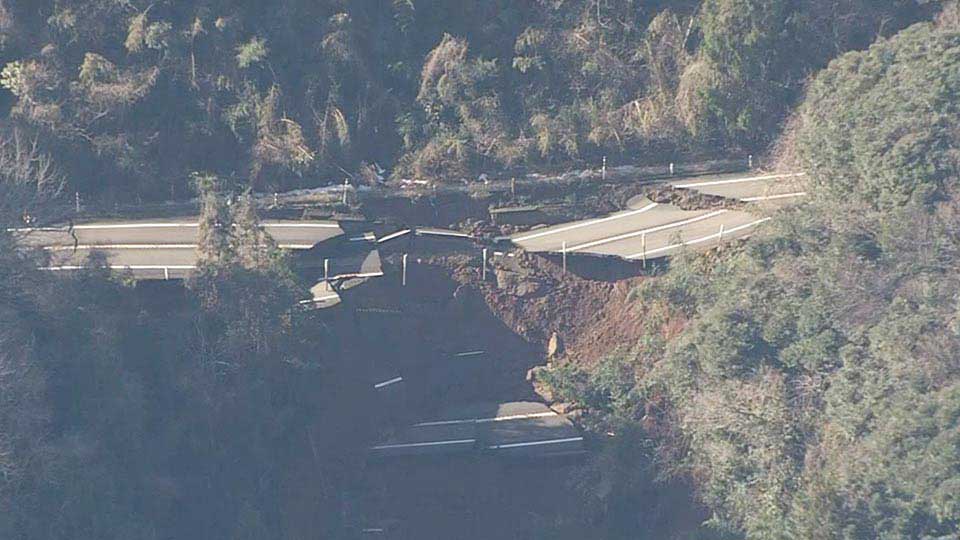
Anamizu Town:
About 20 people in the Mukigaura area
One person in the Kitashitsumi district
Noto Town:
20 people from 16 households in the Kitakawachi area
The Kirihata district is also cut off, but details have yet to be confirmed.
Wajima City:
15 districts are cut off.
Machino, Kounosu, Nishiho, Oya, Najimi, Mii, Nigishi, Koyama, Morooka, Koishi, Hongo, Urakami, Nanaura, Kawarada, and Monzen.
Further details including the number of people have yet to be confirmed.
